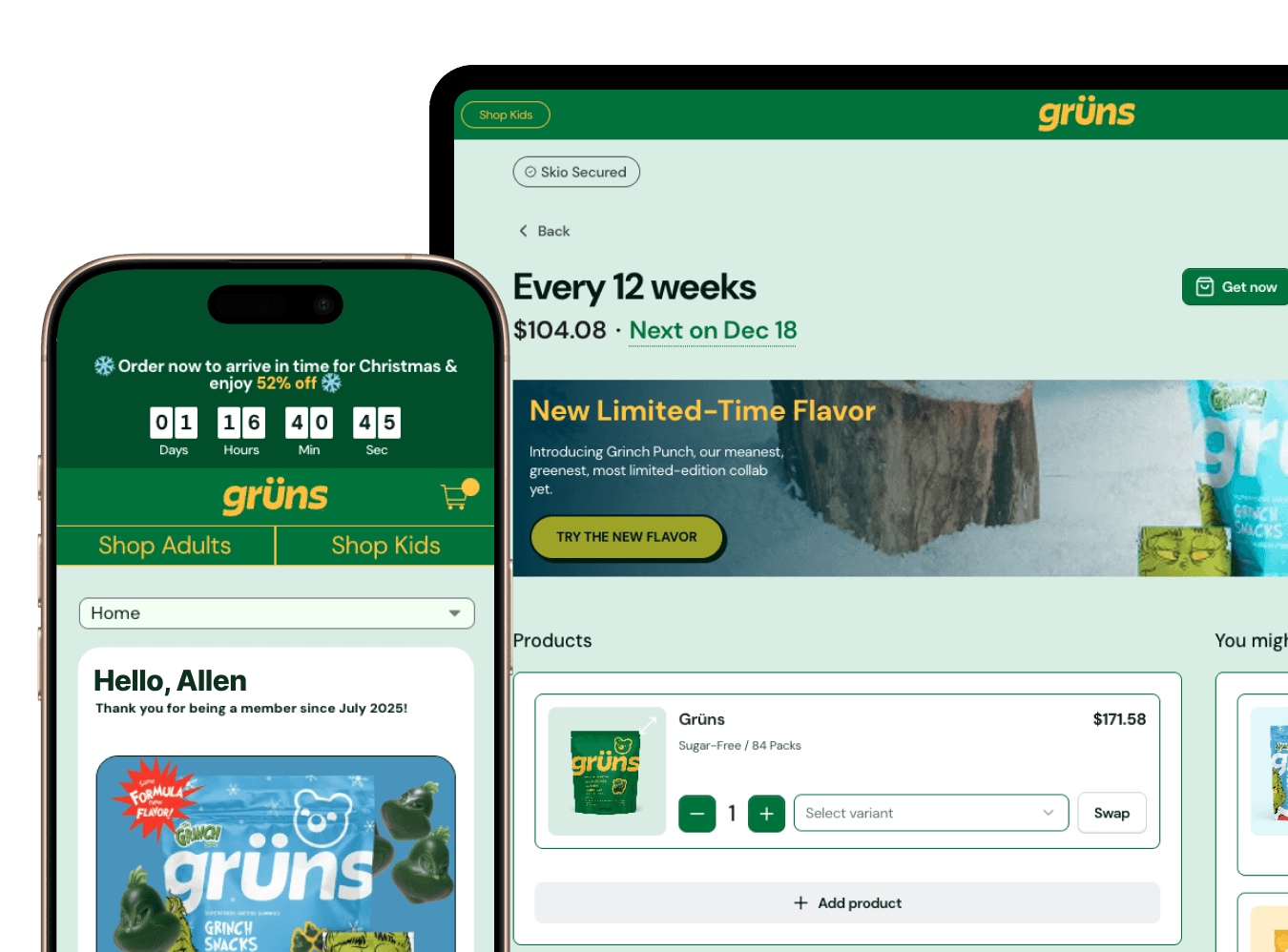Tactical Lessons from Scaling HelloFresh with CEO Dominik Richter
Dominik Richter is the founder and CEO of HelloFresh, the premier DTC meal kit company that delivered 1 billion meals to over 7
million active global customers in 2021 alone.
We sat down with Dominik to dive into his experience of building one of the
largest names in F&B over the last decade. We cover topics including:
The three stages of growth for HelloFresh — and key lessons from each
Why he’s backing Skio, as the head of a subscription-based service
How young DTC companies can diversify their marketing mix
“Ten years ago, we had to build everything in-house and hack together solutions. It’s incredible, a decade later, to see young brands have a way to start with modules straight out of the box. It’s become a far less painful process.”
Ten Years of Growth, Three Key Lessons
As Dominik tells it, the first 3 to 4 years of HelloFresh were a true startup
story.
This mainly involved finding product-market fit and articulating value prop
and product functionalities for the customer frontend, especially since meal
prep and kit services were not an established vertical in F&B or broader
eCom at the time.
And much like the average early-stage company, the HelloFresh team was frequently strapped for cash, with enough runway for 6–9 months.
In retrospect, he would note that any decisions made within such a short time
frame, especially while you’re burning through runway, will likely be
unsustainable for the long run.
As such, he’d advise any founders in similar circumstances to keep this in
mind when potentially establishing fundamental practices or frameworks for the
company.
However, he also looks back at this phase of growth as one that positively
kickstarted a capital-efficient and data-driven culture at HelloFresh.
Growth on an International Scale
As the company started in Berlin, once the HelloFresh team had nailed their
product-market fit, they entered an aggressive growth stage and
internationalized dramatically, expanding to other European countries, the
U.S., Canada, and Australia.
By that point in time, the company’s category was also more broadly
established — which brought both pros and cons as HelloFresh began to see
intense competition from a handful of companies who’d also attracted hundreds
of millions in funding.
In response, they went all-in on growth efforts, particularly honing in on deploying marketing spend to the most
efficient channels and further clarifying product benefits to audiences.
Looking back on this period, Dominik would summarize the company’s mistakes as
threefold:
Because they had just come out of a phase of intensely limited cash flow,
the team was hesitant to make bold, but likely necessary, investments.
Growing like a rocket ship while running on unoptimized margins, just meant
that they overspent significantly on some cost line items likely to the tune
of tens of millions — because they hadn’t optimized processes proactively
At that point, it was also clear that all technology and architecture was
not prepared to handle that volume and the company had to redesign large
parts of its services landscape from scratch
Operating at Scale & Looking Forward
This brings us to HelloFresh at its present state: operating at scale over the
last three years, growing the company from a run rate of $1 billion to roughly
$7 billion.
In Dominik’s words, learning to operationalize that run rate has mainly
entailed pressing the advantages of HelloFresh against competitors in an
ever-growing market, as well as diversifying products and expanding to more
demos and countries.
“I’d definitely consider optimization and scale early on, especially if you’re a startup seeing rapid growth. We made some influential decisions too late, which cost us millions because we were simply unprepared for so much business.”
Optimizing Subscription Functionality
When asked about subscription, Dominik described the early days of HelloFresh,
when subscription tooling out of the box was essentially nonexistent.
As a result, all of HelloFresh’s early subscription functionality was manually hacked together, on top of a classic eCom shop framework.
In Dominik’s words, the software team essentially piggybacked on top of
existing digital commerce systems while attempting to insert subscription
logic into them: basically running normal eCom orders and then rewriting them
as recurring purchases on the backend.
They had to make do with this structure for roughly 3–5 years, and naturally
ran into a series of implications for this makeshift solution, such as:
How would they charge payments on a recurring schedule?
How could they communicate with the user within a CRM?
How would live order data live in their internal system?
Put simply, Dominik knew this approach wouldn’t be sustainable, especially
given the immense strain it placed on engineering resources to make a
non-subscription backend seem subscription-friendly on the frontend.
“The way we hacked subscriptions together was just not scalable. The backend couldn’t handle it at all. So brands today being able to manage subscriptions from end to end without the painful experimentation — it’s pretty great.”
Diversifying Your Marketing Spread
In terms of advice for founders of young DTC companies in 2022, Dominik would
strongly encourage diversifying your mix of marketing channels — something the
HelloFresh team has long prioritized in order to avoid dependency on Facebook,
Instagram, Google, etc.
Although countless brands on the American market have been able to achieve
great scale while relying on just a few popular channels, there’s always the
likelihood of your advantage being competed away on certain platforms, as well
as the current reality of soaring CACs.
Dominik recommends an experimental approach to marketing channels, which might look like:
Setting aside a budget to learn about a new platform early on — even if
initial returns don’t seem scalable — in order to gain an advantage just by
having shown up first
Returning to a more traditional channel which has gone down in price as
costs for operating on modern platforms balloon



















